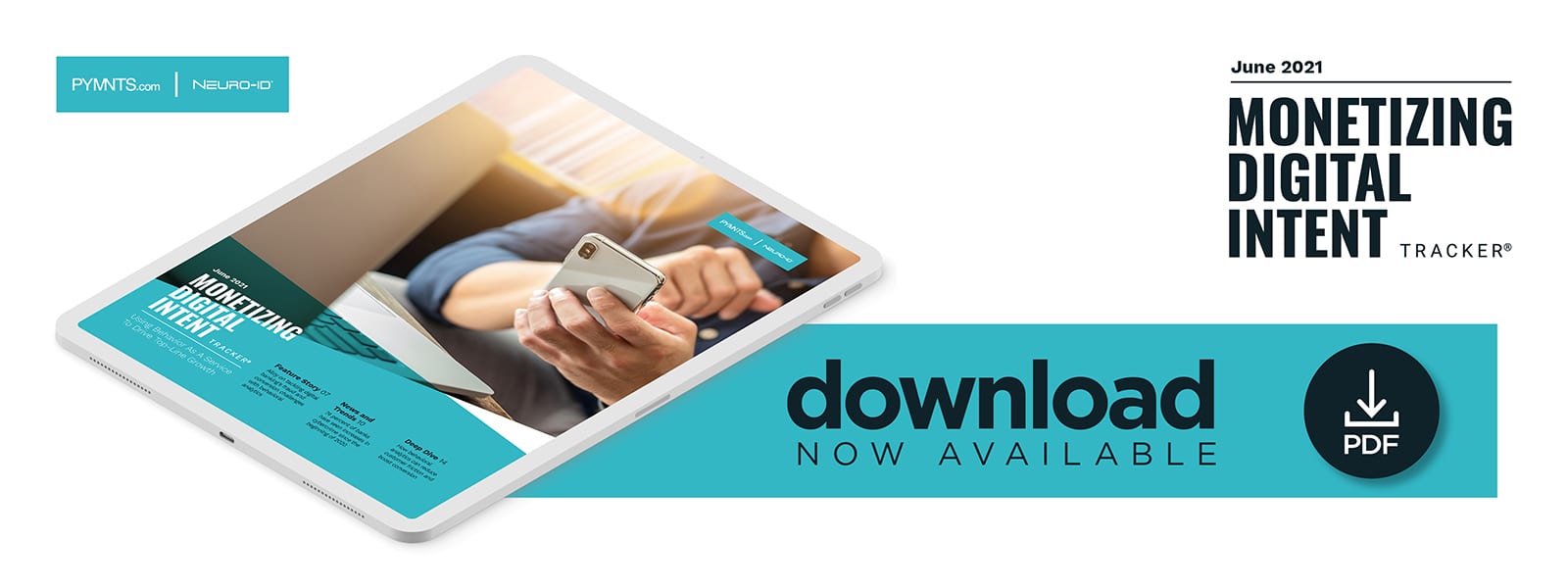Alloy On Tackling Digital Banking’s Fraud And Conversion Challenges With Behavioral Analytics

Taps and swipes signal whether an online visitor is a fraudster or a legit customer struggling to complete a transaction. In this month’s Monetizing Digital Intent Tracker, Harris Chen, senior product manager at identity decisioning platform Alloy, says that behavioral analytics do both — prevent fraud and boost conversion by pinpointing where consumers abandon and why.
When it comes to identity verification, artificial intelligence (AI) is getting a lot of attention from executives at banks and credit unions. PYMNTS’ research has revealed that more than 75 percent of financial institutions (FIs) have invested in AI-based systems or plan to do so over the next year. Proponents of the technology say that it can help FIs and companies consistently authenticate documents, electronically verify a customer’s age and confirm that they are who they say they are.
AI might be a particularly promising new tool in the fight against fraud, but it is certainly not the only one at banks’ and businesses’ disposal. Harris Chen, senior product manager at New York-based identity decisioning platform Alloy, told PYMNTS in a recent interview that while AI is valuable, it is just one mechanism in the battle against scams. It pays, he explained, to examine several technologies, chief among them being behavioral analytics.
“There’s that old adage [of] don’t put all your eggs in one basket,” he said. “There’s no true artificial intelligence that can determine whether or not a person is who they say they are. They’re really going off scores, and that’s where behavioral metrics comes in.”
Behavioral Analytics In The Fight Against Fraud
The fraud-fighting benefits of behavioral analytics could not come at a better time. Last year, the U.S. Federal Trade Commission (FTC) fielded more than 4.7 million complaints, 2.2 million of which were for fraud and 1.4 million of which were for identity theft. Benefits- and government document-related fraud topped the identity theft reporting list in 2020: The FTC received more than 400,000 complaints from taxpayers who said that their identities were stolen and used to apply for benefits such as unemployment insurance, for example. All told, consumers reported losing more than $3.3 billion to fraud last year, up from $1.8 billion in 2019.
Behavioral analytics is uniquely suited to addressing many of the schemes that lead to such theft. The technology examines dozens of actions, including how long a person spends on the page as well as how long they take to fill in their Social Security number, address and other personal information. These actions can be telling, especially if details are typed or retyped many times, contain numerous spelling errors or are filled in very quickly. Such behaviors and patterns can all indicate fraudsters at work or the use of malicious bots.
“If someone is completing every field in exactly 0.02 seconds consistently across every single field, it’s obvious this application is being automated,” Chen said. “The analysis seeks markers for fraud.”
He said that the substance of the innovation is a collection of data points that is transformed into a score, which allows users to determine whether an applicant may present a high level of risk. Alloy and other behavioral analytics companies record customers’ movements on their keyboards or smartphones. Consumers are typically unaware that platforms can track such metrics. Each time a customer logs in to a bank account, types on a keyboard or phone or moves a cursor, these actions can be recorded to create a unique profile. The technology has also grown rapidly because of the pandemic and the need to verify individuals’ identities without visits to bank branches, he added.
“Your typing cadence, how you move from page to page, your swiping … Companies are already grabbing this information, and now they can use it as yet another way to mitigate fraud,” Chen said. “It’s an efficient piece of the puzzle.”
Keeping The Customer Journey Smooth
There is another benefit to behavioral analytics beyond its ability to thwart fraud. Chen said the technology can also help identify customers’ pain points that occur during their day-to-day digital interactions with banks. Analyzing this customer data can help FIs improve the customer experience, which could ultimately drive conversion.
“Behavioral analytics is a way to identify where the friction is so it can be fixed,” he said. “If customers are spending more time on one part of the application, the order of fields … or the color could be changed to see which one works better. It’s a process to figure out the pain point and viable ways to mitigate it.”
Digital banking interactions are the new normal, but despite the many positives they afford customers, they also come with their share of challenges. Tapping into the power of behavioral analytics, however, can help FIs up their fraud protection and customer conversion games to keep pace with this digital trend now and in the future.

